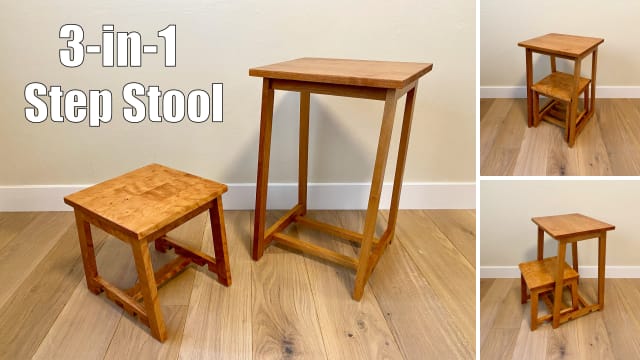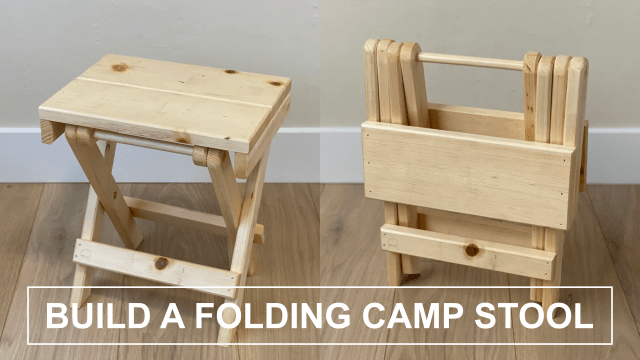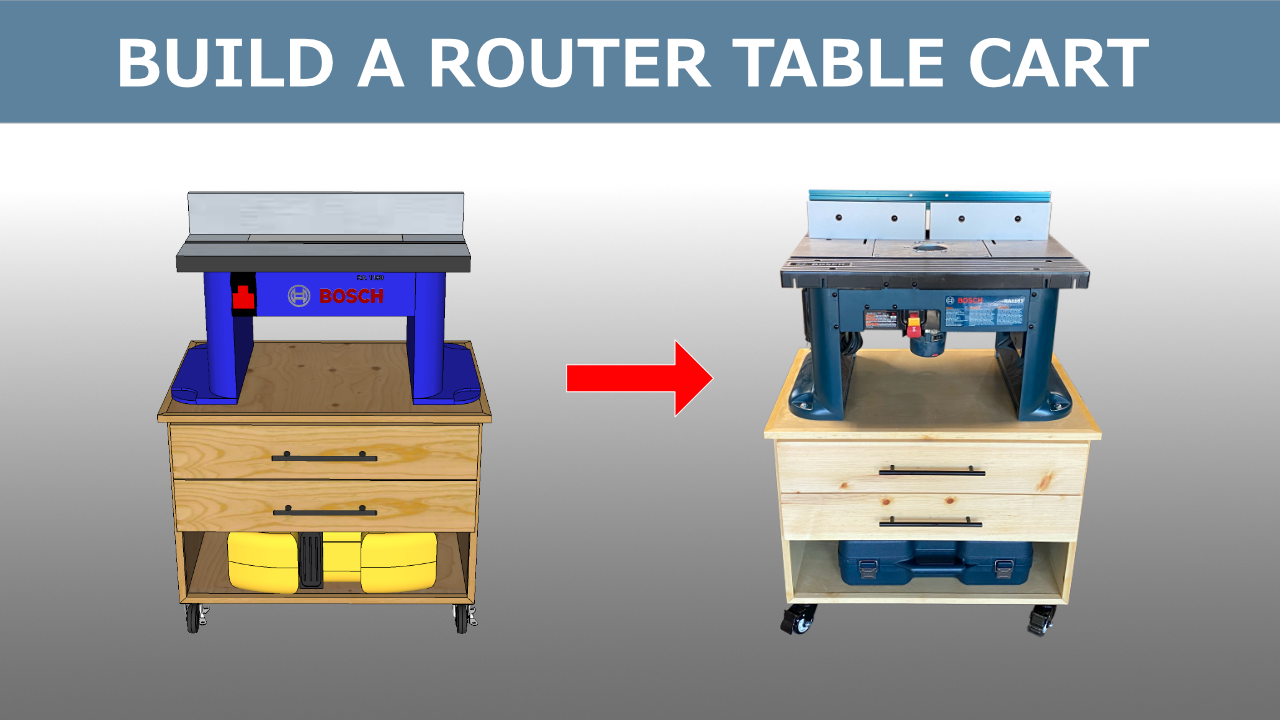In 2020, I picked up a new hobby - woodworking. Since then, I’ve purchased numerous tools and started forming my own shop. A lot of friends are also enticed to work on some DIY projects and asked me about tool recommendation. I figured it’ll be worth to write something about it.
My philosophy in picking up a hobby is learn by doing. For hobbies such as woodworking that require tools, always start with a small set of cheap tools and start building things, and gradually purchase more tools if you find yourself becoming more interested and want to advance. This way, you don’t waste a lot of money. Therefore, I thing there are tools and projects for every level. It’ll be interesting (and challenging!) to see if one can build up their arsenal with various budgets, such as $100, $250, $500, $1000, and above.
Note that tools can typically categorized as hand tools or power tools. To me, power tools are the way to go as they get the jobs done. Hand tools are more reversed for people that enjoy crafting an artwork. Therefore, my list will mostly contain the power version of the tools. Here we go!
All articles in the series:
- Beginner Woodworking Tools Under $100
- Beginner Woodworking Tools Under $250
- Beginner Woodworking Tools Under $500
- Beginner Woodworking Tools Under $1000
SawsPermalink
To start building anything, you will need to cut wood and therefore some sort of saw will be required. The first saw anyone gets should be a circular saw or a jigsaw.
- Circular saw: typically used by contractors for rough cutting lumber, and it cuts straight.
- Jigsaw: more versatile than a circular saw. It can cut curves, but much slower as the saw as the saw blade is much smaller and moves at a up-down motion.
Even though jigsaw is more versatile, I would recommend circular saw over jigsaw. The reason being that:
- Circular saw is simply more powerful and easier to use. While jigsaw can cut curves, it is really hard to maneuver and cut correctly. Even with a straight line guide, it is much easier to drift. The up-down motion also makes it get hot very easily. I personally only use jigsaw if I need to cut large holes in a board.
- I think the most beginner-friendly projects involve straight cutting only, i.e., the projects are usually a variable of a box-shaped thing, be it a shelf, jewelry box, bench or stool. There is not much curve to cut.
My pick: Ryobi 13 Amp corded 7-1/4 in. circular saw ($50). Cheapest one from ryobi, but should be more than enough for a beginner. In fact, you can get them $40 “factory blemished” at Direct Tools Outlet, which is essentially new that are returns from Home Depot purchases.

PS. I would stay away from cordless tools for now.
DrillsPermalink
To drill holes and assemble the cut pieces, you will need a power drill here. Again, there are a lot of options. My pick is Ryobi 18-Volt ONE+ Cordless 3/8 in. Drill/Driver Kit with 1.5 Ah Battery and Charger. You can typically get them at $50.

A slightly upgraded pick is Ryobi 18-Volt ONE+ Lithium-Ion Cordless 1/2 in. Drill/Driver Kit with (1) 1.5 Ah Battery and 18-Volt Charger ($69). This one comes with a larger chuck that is supposedly can get you cover in the long run should you need to use a larger drill bit. However, this exceeds our budget of $100 when combined with the saw. However, if you don’t mind going slightly out of budget, getting a drill/driver combo is an excellent way of building your tool collection. The reason is simple: when you are working on a project, you often need to predrill a hole for screws, then drive a screw to fasten the pieces. If you only have a drill, you will need to replace the drill bit/drive bit a lot. An impact driver not only helps you solve the problem, but also provides the “impact” functionality that you might need in some day. You can get a set of Ryobi’s drill/driver combo with $99.

Alternative CombinationPermalink
Now that we’ve talked about buying combos, there are other combos that fits the 1 saw + 1 drill combination. One such option is this one ($89). However, both of the tools are cordless version, and it only comes with 1 battery and it’s a hassle to switch battery back and forth. Unless you plan to purchase another battery (which is quite expensive), I don’t recommend it.
This combo ($129) comes with two batteries and slightly exceeds our $100 budget. It solves the 1-battery problem. In fact, it comes with a smaller battery, which is good for the drill as larger battery tend to get quite heavy. Nevertheless, the 1.5Ah battery will drain fairly quickly when used with a circular saw (say less than 10 cuts?), and the charging time will be frustrating.

Therefore, I would still recommend buying a corded circular saw + a drill for starters. PS. There are other combos that come with like 5-6 tools when we have a higher budget and some of them are good deals. I will probably cover them in another article.
What You Can Work OnPermalink
With only a few simple tools, you can already start building some impressive projects. Some of these include:
 |
 |
 |
| workbench | table | shoe rack |
ConclusionPermalink
With $100, you can already get a circular saw and a drill/driver and start building things. After you build a few projects, think about if you still would like to continue woodworking as a hobby. If yes, maybe move on to expanding your tool selection!
AppendixPermalink
Power Tools BrandsPermalink
There are a lot of brands you can choose from. As a beginner, Ryobi corded ones are the best bang for your buck. They are built with relatively high-quality while the price is very affordable. You can easily get them in Home Depot which has a very friendly return policy should the tools fail you. However, if you feel like you have a lot of budget, then I would recommend DeWalt, which is contractor grade tools with fair price and much better quality than Ryobi (well but that easily defeats our $100 goal here). Here’s my rating on the power tool brands:
- Homeowner grade: Black & Decker, Harbor Freight ones. I’d stay away these unless you are really tight on budget.
- Somewhat better: WEN
- Hobby grade: Ryobi, SKILSAW, Porter-Cable
- Somewhere in between: RIDGID
- Contractor grade: DeWalt, Makita, Milwaukee, Bosch.
- Woodshop grade: Festool, JET. These are really high quality but super expensive tools.
Corded vs CordlessPermalink
Except for the tools that demand for high mobility, most of the first power tools you purchase should stay corded, as some of the tools such as saws is power hungry, which drains battery real fast unless you have a lot of batteries. Plus, cordless version is always cheaper.
- Drill/Driver should be cordless as they are the most essential tools and you carry them around. Only exception is if you are buying a hammer drill, which is less likely used for woodworking but more all-around home improvement jobs. Other tools that I favor cordless version including oscillating tools, trim routers.
- Tools like power saws require a lot of power, and you don’t need a lot of mobility. Corded is a good option for these. Others include: hand-held planer, random orbit sander.





Comments